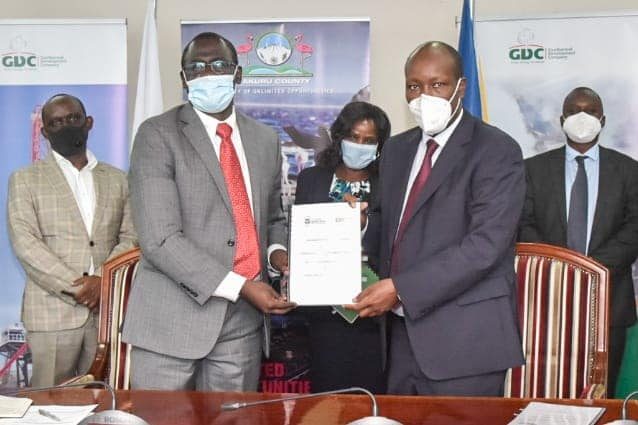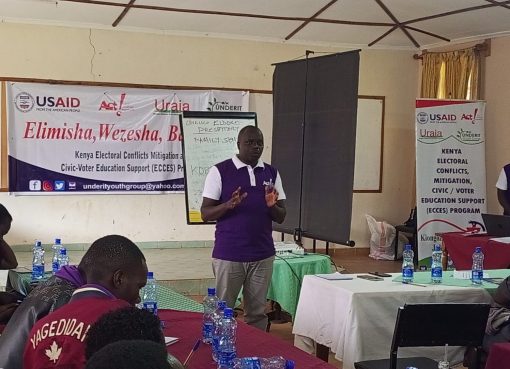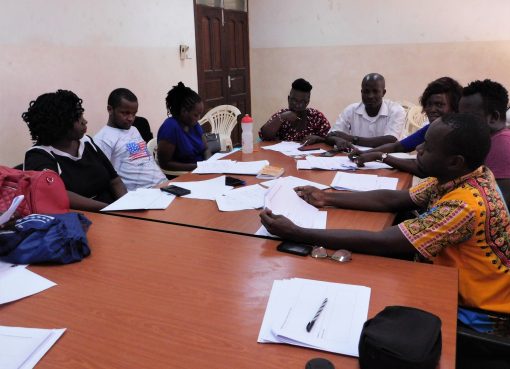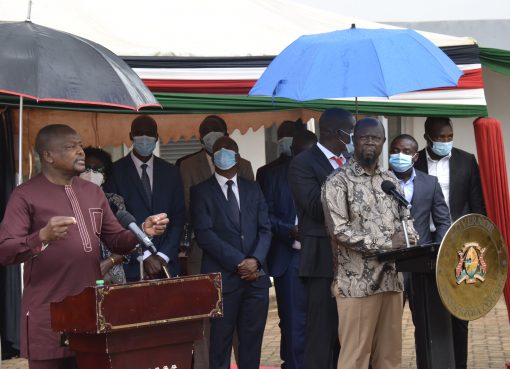
The Geothermal Development Company (GDC) of Kenya and the Nakuru County government have entered
into a joint collaboration to supply farmers with an affordable source of energy.
The GDC Chief Executive Officer, Eng. Jared Othieno said the state agency has conducted pre-feasibility studies that analyse cost-effective means of extracting geothermal energy for agriculture-related process, including drying tea, cereals, powering dairy pasteurisation, heating greenhouses and fish farms.
“If efficiently harnessed, geothermal heat will deliver energy that will enable farmers and food processors increase production and improve food security. Energy is a big factor for farmers. This collaboration is aimed at ensuring that they undertake various processes at a cheaper cost,” stated Eng. Othieno.
Governor Lee Kinyanjui said the partnership between the devolved unit and the state agency was aimed at enabling farmers improve productivity and carry out viable value addition projects for their produce.
“Reliable and cheap electricity is key to the agricultural sector. To realise this goal, we are seeking to leverage private and public sector partnerships to improve farming and agro-processing.
Geothermal energy will be critical, especially in bolstering the twin pillars of manufacturing and food security. We have signed a Memorandum of Understanding that will enable our farmers use this technology in food production and increase their production thus creating wealth more wealth,” said Kinyanjui.
The governor said his administration and GDC will set up a joint committee for implementation of the framework and ensure the venture is successful.
The signing of the MOU was witnessed by the Trade and Tourism County Executive Committee Member, Raymond Komen, his Environment, Energy and Natural Resources Counterpart, Eng. Festus Ng’eno and County Attorney, Caleb Nyamwange.
The project hosted at the floor of the vast Menengai crater in Nakuru County has been fashioned to benefit potential investors and local communities.
Eng. Othieno explained that harnessed heat from the crater can be transported for about 10km through an elaborate reticulation of pipes and pumped into individual farms, private homes and industries.
“Geothermal heated greenhouses, aquaculture ponds, dairy plants and geothermal powered laundries within that radius can negotiate with GDC for facilitation. Farmers and homeowners who use electric powered systems will save up to 50 per cent by switching to a geothermal system” stated the Chief Executive Officer.
Komen observed that Nakuru town had one of the fastest growth rates in Kenya, where several industries are starting their operations. The collaboration, he said provided vast opportunities for utilizing the geothermal energy directly.
“The use of geothermal fluid in the dairy industry can be considered a by-product, while electricity production is the primary product. The smallest single unit of geothermal powered milk plant can process between 250,000 to 500,000 litres of milk every day. Bahati constituency which hosts Menengai crater is one of Nakuru’s best tomato producers. With adoption of this new system of energy, farmers will improve yields by more than 30 per cent,” affirmed the Trade and Tourism County Executive Committee Member.
With the use of geothermal beyond electricity, Othieno said GDC was planning to drill additional wells in densely populated farming areas in the county.
“The national focus in the next five years will be enhancing food security. The development of geothermal energy will play a pivotal role in achieving this. Increased uptake of geothermal energy will make it easy for GDC and partners to come up with more innovative ways of using steam from the wells,” said the environmental executive.
Eng. Ng’eno observed that GDC was already engaged in a large number of direct use projects, including fish rearing, tomato and capsicum farming among others in Menengai. This follows several successful pilot projects on direct use of geothermal in farming.
The Environment, Energy and Natural Resources CEC said owing to excellent geothermal resources found at the Menengai Caldera both thermal and electrical energy can be harnessed.
Geothermal energy can provide both thermal energy and even electrical power given the excellent geothermal resources found at the Menengai caldera.
A feasibility study conducted two years ago indicated that a medium sized milk processing plant using geothermal energy for milk processing resulted in energy cost reduction of up to 60 per cent.
The geothermal energy will also come in handy in laundry systems. Heated water in the laundry will be used in the washers and dryers.
“The hot water to the washer is mixed with cold one to the required temperature of the clothes to be washed. The electrical heating element in the dryer is replaced with a specially designed fan coil unit which uses geothermal heated water at about 80 degrees centigrade to ensure the clothes are dry,” explained Eng. Ng’eno
With regard to fish rearing, aquatic ponds are heated to and maintained at 29 degrees centigrade for optimal fish metabolism hence enhanced faster growth. Here, the geothermal heated water is mixed with cold water to attain the required temperature.
The GDC Chief Executive stated that maintaining aquatic ponds at a constant temperature of 29 degrees centigrade decreases maturity period of fish from six to four months for Tilapia hence profitability is increased by more than 40 per cent.
He explained that at 50 degrees centigrade, heated water is circulated around a greenhouse to control the humidity at night, early morning and during wet seasons of the year where humidity inside greenhouses rises above 85 per cent.
“Greenhouse heating cuts down on the use of fungicides by the reducing humidity. A constant optimum temperature inside the greenhouse results in the enhanced growth rate of plants as well as quality. Profitability may go up by more than 30 per cent as well as increasing market share of the crops due to the use of green energy” said Eng. Othieno.
By Anne Mwale





